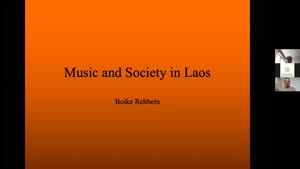Can Youth Save Malaysia's Democracy? - Prof. Dr. Meredith Weiss - University of Hamburg
- Lecture2Go
- Catalog
- F.5 - Geisteswissenschaften
- Asien-Afrika-Institut
- Youth and Ageing in Southeast Asia
Catalog
Can Youth Save Malaysia's Democracy?
In 2019, Malaysia passed its first-ever unanimously approved constitutional amendment (dubbed “Undi [Vote] 18”), to lower the country’s voting age from 21 to 18. Not only was Malaysia a global outlier, as one of only ten countries still to restrict voting to citizens 21 and older, but Malaysia has a youth bulge (the median age is 29.2; 45 percent of the population is aged 15–39). This change will make an estimated 7.8 million 18–21 year olds eligible to vote in the next general election, due by 2023—a stunning increase from the 14.9 million registered to vote in the last general election in 2018. Moreover, Malaysian youth are, on average, both fairly well-informed and politically aware, and concerned about their country’s direction and their own prospects. (Just one important indicator: the pre-pandemic youth unemployment rate was over three times the overall rate—and it was youth themselves who led the Undi 18 charge.) One might assume that, especially in a country already edging toward reform, however fitfully, an influx of young voters might thus tip the scales toward faster, deeper liberalization. Such a conclusion would be premature, though Malaysia’s youth do seem fairly certain to leave their political mark.
What we should not expect in Malaysia is that a sudden flood of 18-to-21 year-old voters will upend Malaysia’s next elections. Most importantly, the emergency government now (controversially) in control has delayed implementation of Undi 18; all those voters are likely to remain disenfranchised until after the next polls. Even were they able to register, however, not all share the same priorities or are committed to a similar democratic vision. Especially key are differing perspectives on the role of race and religion in government, and on the ethnonationalist coalition that came to power in early 2020 through a parliamentary/palace coup, ousting the reformist coalition elected in 2018. Nevertheless, elections are not the only way youth can make, and indeed have already made, their mark on Malaysian democracy. Especially worth watching in this vein are a set of intriguing youth-led and/or youth-oriented civic-education and political-cultural initiatives that suggest a potentially important role in shaping political socialization and culture—everything from creative media campaigns to raise civic/political literacy, to a Malay-Muslim-led drive to realize a Bangsa Malaysia (multicultural Malaysian nation), to youth-driven initiatives for structural reforms such as legislative strengthening. Even before the 2018 elections, reforms had progressively loosened the strictures preventing undergraduates’ political engagement, widening the constituency for even partisan engagement. And today’s youth came of age in an era of expanded avenues generally for awareness-raising and mobilization, and of prominent, lively mass movements around core political positions and identities, from free-and-fair elections to Islamism. Regardless of their personal ideological or policy preferences, Malaysian youth are thus more likely acculturated to new ways of approaching and doing politics, making it more likely that they develop and model new habits of participation and enforcing accountability.
---
The population of Southeast Asia has experienced a sevenfold increase in less than 120 years to a total of more than 650 million people, which compares to Europe with around 740 million. Southeast Asia’s population is developing at a high speed, and although the growth of the elder is rapidly increasing, Southeast Asian nations have relatively young populations, which make them highly attractive for companies because the region’s GDP is growing expansively.
Using the young population structures and aging of Southeast Asian populations as a lens, international scholars will discuss important current issues, such as connections between youth and violent conflicts, the categorisation of age groups in Southeast Asia and how youths express themselves in cultural productions.





